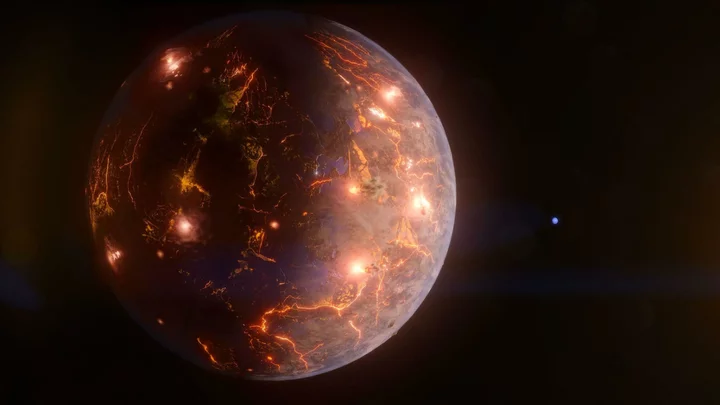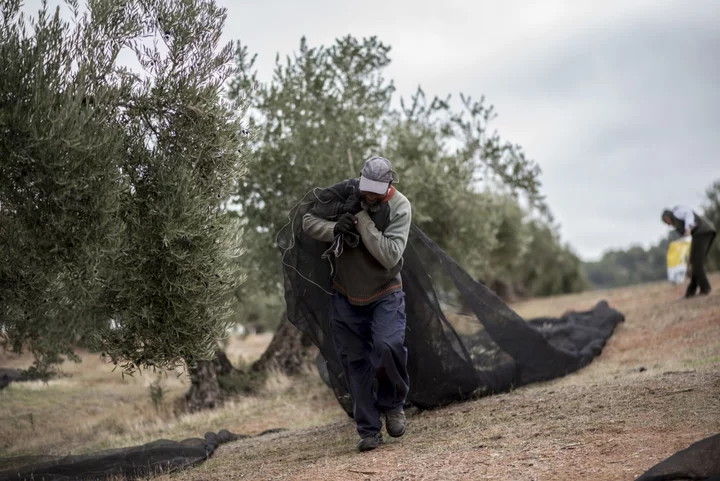A team of exoplanet hunters has discovered a world that could be packed with gushing volcanoes.
If that doesn't sound harsh enough, consider this: Half the planet resides in perpetual daylight while the other exists in constant darkness.
But what fascinates researchers is how these extreme conditions may also combine to provide the necessary ingredients for the planet to have an atmosphere. So far the space search for an Earth-like planet outside the solar system with an atmosphere has eluded astronomers, but they might be getting closer.
SEE ALSO: Webb may have just found an Earth-like world with an atmosphereEarlier this month, NASA announced the discovery of a promising candidate. Now researchers appear to have found yet another in this exoplanet, dubbed LP 791-18 D. The intriguing world sits just inside the so-called habitable zone, the region around a host star where "it is not too hot and not too cold for liquid water to exist on the surface of surrounding planets."
"The day side would probably be too hot for liquid water to exist on the surface," said Björn Benneke, the astronomer who supervised the study, in a statement. "But the amount of volcanic activity we suspect occurs all over the planet could sustain an atmosphere, which may allow water to condense on the night side."
Why are volcanoes important for habitability?
Many planetary scientists believe volcanic activity is key for a life-sustaining world. That’s because the release of gasses during a volcanic eruption contributes to the atmosphere and can help a planet maintain moderate temperatures.
NASA has playfully called Earth's atmosphere its "security blanket" — without an atmosphere, the type of life flourishing on Earth wouldn't exist. This cocoon holds oxygen in the air, filters out damaging ultraviolet radiation from the sun, and maintains the pressure for liquid water to exist on the planet's surface, all while keeping the world warm and liveable.
That's, in part, why scientists are intrigued by this exoplanet, a temperate world about the size of Earth orbiting a small red dwarf star about 90 light years away in the southern constellation Crater.
Scientists have found signs of volcanic activity from Maat Mons on Venus. Credit: NASA / JPL-CaltechThe discovery of the new world was published in Nature. Along with several ground-based observatories, astronomers used data from NASA’s TESS (Transiting Exoplanet Survey Satellite) and Spitzer Space Telescope, which retired in 2020.
According to NASA, scientists had prior knowledge of two other exoplanets orbiting the same star, referred to as B and C. The outer planet, C, is about 2.5 times Earth’s size, and over seven times its mass.
Exoplanets C and the newly discovered D pass each other quite closely as they orbit the star. Because of C's massive size, its gravity tugs on D, stretching its course around the star into a more oval shape. If the exoplanet behaves like Jupiter's moon Io, its deformed orbit would create friction heating the inside of the planet, causing many volcanic eruptions on the moon's surface. Io is the most volcanic world within our own solar system.
A montage of views of Jupiter's moon Io taken on March 1, 2023. Credit: NASA / SwRI / MSSS / Jason Perry (CC BY 3.0)Jessie Christiansen, a co-author on the paper and Caltech astronomer, said one of the core questions in astrobiology, the field that studies the conditions necessary for life to arise in the universe, is whether geological activity — like plate tectonics and volcanoes — are necessary for life to emerge.
Want more science and tech news delivered straight to your inbox? Sign up for Mashable's Top Stories newsletter today.
“In addition to potentially providing an atmosphere, these processes could churn up materials that would otherwise sink down and get trapped in the crust, including those we think are important for life, like carbon,” she said in a statement.
How does Webb study atmospheres?
The research team hopes to get observation time on the James Webb Space Telescope, the preeminent infrared observatory in space, to conduct an atmospheric study on the exoplanet. Discoveries of water and methane, for example — important ingredients for life as we know it — could be signs of potential habitability or biological activity.
With Webb, researchers can use a technique called transmission spectroscopy. When planets cross in front of their host star, starlight is filtered through their atmospheres. Molecules within the atmosphere absorb certain light wavelengths, or colors, so by splitting the star’s light into its basic parts — a rainbow — astronomers can detect which light segments are missing to discern the molecular makeup of an atmosphere.
A group of scientists has already received the greenlight for a study of its giant neighboring planet, C.
But for right now, Ian Crossfield, a University of Kansas astronomer and study co-author, think it's too much of a leap to speculate about possible volcanic activity or habitability of the exoplanet with such limited information. Regardless, he's interested in learning more.
"People study Jupiter still," he said in a statement, "but they don't do it because they think there are aliens living there."









